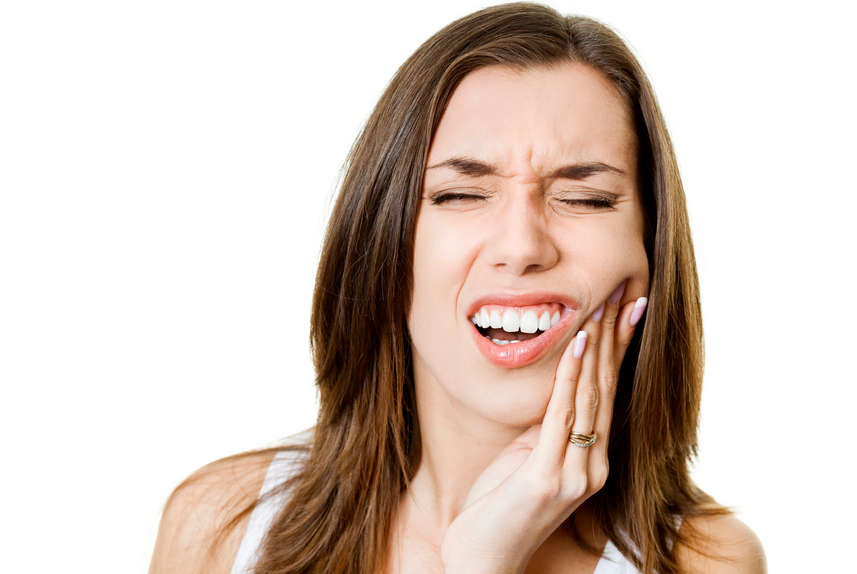The pain caused by wisdom tooth is usually so unbearable that many people opt to remove it through a surgical procedure. The procedure usually requires post-operative care to make sure you recover fast. After the removal of your wisdom tooth, it is important that you clean your teeth thoroughly to keep bacteria from developing and causing an infection. Most people brush their teeth regularly but often end up noticing white stuff inside wisdom tooth hole. The question is, "Should you be worrying about this white stuff in wisdom teethsockets?"Keep reading to find your answer.

What Is the White Stuff in Wisdom Teeth Sockets?
It is actually the scar tissue, which usually means your socket is healing well. Since your mouth is always wet, the socket just cannot have a scab on its wound like you usually have when you have a wound on your arm or on other parts of your body. Even when you have a scab on your arm, it will turn white and become soft if you expose it to water while showering. The same happens in case of that white stuff in tooth extraction hole. It implies that you don't have to worry about that white stuff and continue following the instructions you have received from your dentist because it's just a damaged gum tissue in the healing process.
When Should I Worry After Removal?
You need to recognize the fact that wisdom teeth removal is never a straightforward procedure; in fact, there are certain risks and complications involved, such as nausea, bleeding, swelling, pain, vomiting, and more. The good thing is that the wisdom tooth removal procedure won't cause any long-term complications.
Sometimes, it becomes important to make an incision in the gum tissue to remove your impacted wisdom teeth – your dentist may even have to remove the bone as well. This may lead to some other complications such as infection in the socket caused due to trapped food, painful dry socket, damage to nearby teeth or nerves, and exposure of bone.
It is, therefore, important to keep an eye on your condition and know how your gum is healing after a wisdom tooth extraction procedure. You should call your dentist if you're experiencing following symptoms, which usually indicate nerve damage, infection, or another serious complication:
- Excessive bleeding
- Difficulty breathing and swallowing
- Fever with severe pain
- Swelling that won't go away after three days
- A bad taste in your mouth with pus oozing from your wisdom tooth socket
- Pus or blood in nasal discharge
- Numbness on and around the wisdom tooth socket
Aftercare Tips for Wisdom Teeth Removal
Even though you don't usually have to deal with several complications after wisdom tooth removal and don't usually need to worry when you notice white stuff in wisdom teeth sockets, you may need to take certain steps to ensure proper recovery. Here are some aftercare tips that will help keep things under control.
- Take special care when eating something and avoid biting the inside of your lip, check, or tongue, especially when the area is still numb.
- Get the cotton gaze pad and bite on to it while there's still some bleeding. Replace it when it becomes soaked with your blood. Don't worry about the bleeding; it's normal after a tooth extraction procedure. Contact your doctor though if it continues or becomes heavier.
- Apply an icepack directly on your cheek to reduce swelling and relieve pain.
- Avoid lying flat on the bed because it will cause more bleeding.
- Don't drink liquids without a straw or smoke at least after the first 24 hours of your surgery. Eat soft food until you recover completely.
- Use warm water to rinse your mouth gently. Do it several times a day to reduce pain and swelling. Take any antibiotics or narcotic prescribed by your doctor for pain relief.
- Keep eating soft food such as milkshake, pudding, soup, or smoothies for a few days after your surgery. You can start eating solid food again after your recovery.
- Avoid rubbing or touching the area with your tongue or finger, especially when you notice white stuff in wisdom teeth sockets.
- Brush your tongue and teeth, but don't apply too much pressure and avoid the extraction site if possible. It is, however, a good idea to return to your normal flossing and brushing routine after the third day of your surgery. Be gentle, your gums will still be tender or inflamed.
- Don't spit out toothpaste too forcefully, or it may disturb the blood clot formed on the extraction site and your wound may start bleeding again. You will be better off just dribbling the excess toothpaste out of your mouth.
- Avoid opening your mouth too wide, especially when you feel you cannot open it as wide as before. Being unable to open your month wide is normal due to swelling around the wounded gums.
- Make use of a disposable syringe when irrigating inflamed. You should go this way only when you feel that swishing with mouth rinses isn't producing desired results.
- Follow your doctor's instructions carefully to avoid complications like dry socket.
